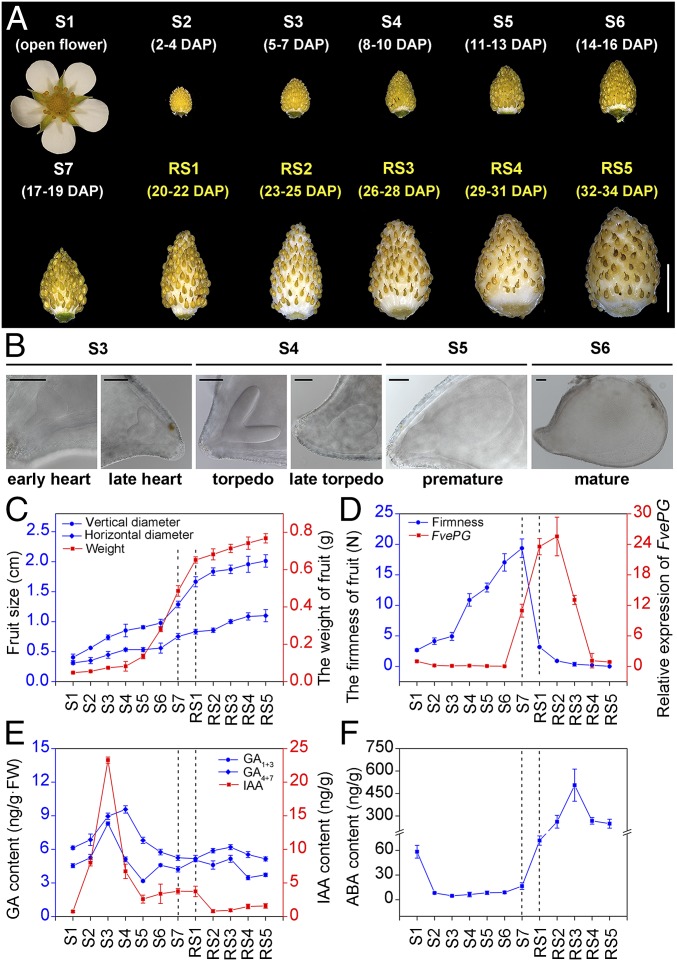Fig. 1.
A refined description of Fragaria vesca fruit developmental stages and their relationship with changes in the content of auxin, gibberellin, and ABA. (A) A detailed description of different fruit developmental stages. Fruit development includes early growth and late ripening phases. The early phase, which is further divided into seven stages, S1–S7, is characterized by gradual increase in fruit (receptacle and achene) size, weight, and firmness. S1–S5 were described previously (7). The ripening phase, divided into RS1–RS5. For each stage, the corresponding days after pollination (DAP) are indicated. (Scale bar: 1 cm.) (B) Embryos inside cleared seeds of different developmental stages imaged with DIC optics. (Scale bar: 100 μM.) (C) Quantification of fruit dimension (length and width) and weight in different stages. Error bars represent SD of 20 fruits. (D) Changes in fruit firmness and the expression of PG gene in fruit (receptacle and achene) in different developmental stages. FveACTIN was used as the internal control. Error bars represent SD of three independent replicates (20 fruits were used for each replicate). (E and F) Changes in IAA, GAs (E), and ABA (F) contents of fruit (receptacle and achene) in different developmental stages. Error bars represent SD of three independent replicates (10 fruits were used for each replicate).

